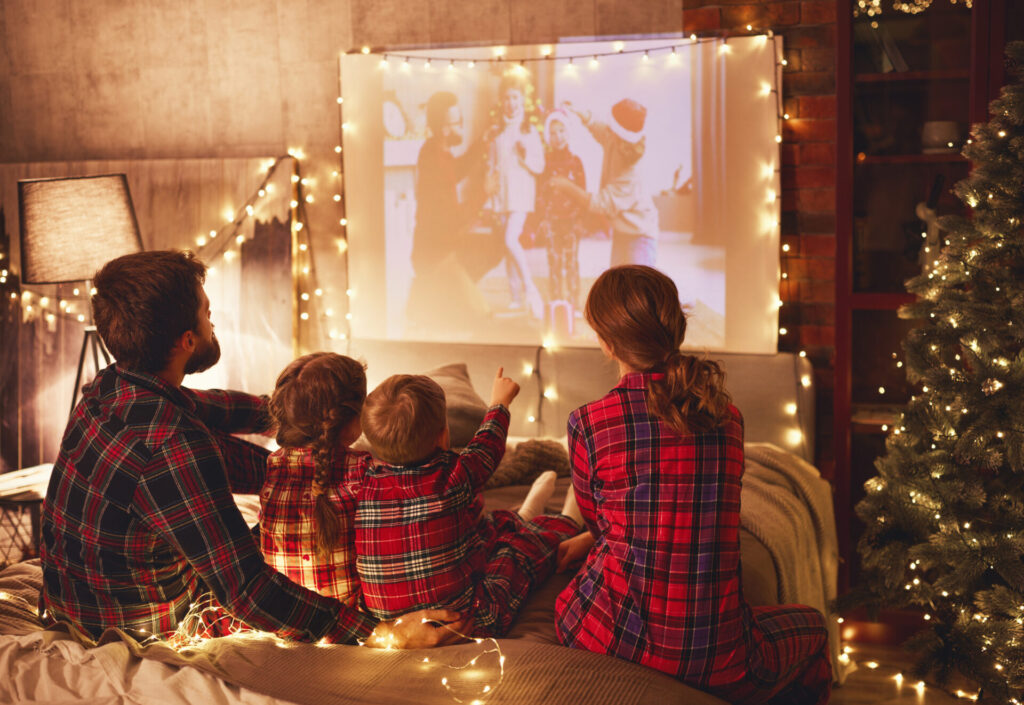 Do you make efforts to consume less around the house and in your lifestyle with your kids? Teacher Sonia Satov provides eight simple but effective ways to cut down on waste, reduce your carbon footprint, and recycle and reuse common products without spending a fortune this Earth Day and year round.
Do you make efforts to consume less around the house and in your lifestyle with your kids? Teacher Sonia Satov provides eight simple but effective ways to cut down on waste, reduce your carbon footprint, and recycle and reuse common products without spending a fortune this Earth Day and year round.
Focus on the First R: Reduce
I am glad that all my students knew what the three “Rs” (which are listed in intentional order, by the way) were before they even became part of my “eco-friendly” classroom. In fact, the term seems to be so ubiquitous that I rarely find a child above the age of seven who doesn’t know what they are. This is good. This is progress.
But the very first R is so easily neglected. Or rather, it’s so hard to enact. REDUCE. It sounds simple, but our society is extremely consumer based. There are always reasons to buy new things: Sometimes we genuinely need something, like a rain jacket that is actually rainproof, or a new pot after the last one was lost to a “science experiment”; sometimes it’s so hard to resist (and so easy to justify!): It only costs a dollar!”, “70 per cent off the shoes I’ve wanted for years”, “But if she wants a book instead of a videogame….”. Yet, every time we buy something new, we are hurting our planet. The materials in the product itself, and the resources used to product/ship/market/package the product all further strain our environment.
Almost every environmental cause out there is impacted by consumerism: Animal habitats are destroyed when forests are cut to meet increasing demands of paper towel, wrapping paper, etc.; air quality decreases with emissions from transport vehicles to ship products to our stores. The list goes on. Clearly reducing our purchasing habits is crucial in helping preserve our planet and our resources to work towards the future that our children deserve. But I don’t think we have to always feel guilty about buying something, or feel an obligation to find a creative solution to every “need”.
Time, money (and if we’re being honest, desire) play a role, but this does not absolve our responsibility to try. Like so many other parts of our lives, balance is key. So the question then becomes, how can we realistically consume less?
Top eight ways to consume less
-
- Get motivated – Let’s face it, with consumerism so ingrained in our culture and even our pastimes, it can be really hard to find the motivation to buy less. The answer? Annie Leonard’s free online video, “The Story of Stuff”. If you haven’t seen it, you should. Seriously. Stop reading, and go watch it now. She presents the reality of consumerism in a clear and factual manner. This was her original project, but there are now 6 other videos, including the “Story of Bottled Water” and the “Story of Cosmetics”. One of the things I like best about this project is Ms. Leonards’ drive to provide realistic ways to let these inspiring videos change your life.
-
- Water bottles for the iPhone generation – Bottled water costs more than gasoline. Crazy, but true, and we’re not even talking about the huge environmental costs. Reusable water bottles are certainly a great solution to drinking tap water on the go, but there can be glitches in integrating them into your life. Have you ever dutifully carried your water bottle with you, only to find that you’re thirsty and your bottle’s now empty with no opportunity for a refill? I certainly have, and it can be demotivating to have to buy some plastic-contained liquid despite my efforts. Well the expression “there’s an app for that” now applies to this conundrum! There are several different ones out there, helping you find water in a variety of ways. One Toronto-based app, that got some deservedly good press during World Water Week, is Quench. Available for free, it will tell you where your nearest water fountain or water “refill location” is. As fountains aren’t functional year round in our chilly winter months, the inclusion of nearby businesses that welcome you to refill your bottle is key to this being useful.
-
- Share – I once heard a radio interview where the guest suggested a great way for children to begin consuming less while still balancing their inevitable desire for the latest and greatest. She spoke about how her daughter and her friends share video games. The principle is simple and effective, yet something I think most families haven’t tried: If three friends each buy a cool new game, they can take turns with keeping each of them at their house. That’s reducing the consumption by 66 per cent! Of course this requires some communication and social skills, and issues may arise. Yet, these are skills that we want and need children to develop. What better way than through a very motivating context—friends and video games.
-
- Model Sharing – We know that kids are greatly impacted by examples that we set, so of course this applies to our purchasing habits. The video game sharing principle can be applied to so many other things, and books (or magazines) are an easy place for many adults to start. This could take shape in the form of a monthly swap. Start a new kind of book club, and meet every month to socialize and swap for a new great read.
-
- Upcycle – While upcycling is technically reusing, if what you make replaces something that you were going to buy, you have bought one less thing. There are lots of DIY (do-it-yourself) threads out there, which is great but can be intimidating and/or time consuming. Good thing you don’t have to be Martha Stewart to give new life to something that’s just not quite “fresh” anymore. For example, an old t-shirt can be cool again with a simple bleach pen craft—no artistic experience necessary. If the shirt is really just too far gone, it still doesn’t need to be thrown away. Old t-shirts (or other clothing!) make perfectly good rags for cleaning with just a few simple snips. Upcycling is really popular, and a simple internet search for “how to upcycle ___” will provide a long list of results, from simple craft to highly skilled art project, and from kitschy to “where did you buy that?!”. Next time you are ready to toss, it’s worth a visit to Google first. You just might end up with something you planned to buy, and it won’t cost you (or the earth) a dime.
-
- Air-dry – With advent of Earth Hour in 2007, there has been more conversation about “powering down” than ever. One easy way to work this into your life is to air-dry your laundry (or at least some of it) on a clothesline or drying rack. It’s worth taking the extra time to set your system up so that it runs smoothly, and convenience never becomes the reason you don’t air-dry. A few simple things are all you need. I recommend setting up a quick-release clothesline in your backyard or on your balcony, with an accessible store of clothespins. If you opt for a drying rack, it’s worth it to plan out a space for it in your laundry area, or if (like me) that’s not an option, invest the time in choosing one that is easy to expand and collapse. There are even models that fold-away into a small “holder” on the wall, which are great for multi-use spaces. Imagine a drying rack that extends over a bathtub but tucks away neatly behind a towel rack when not in use. Genius! Changing habits can be as much about making it convenient as it can about being motivated.
-
- Extend the life of your purchase – Sometimes lasting longer is not a matter of quality, but of planning. Concentrated detergent is a great example. If you can afford the bigger upfront cost, concentrated detergents last longer, are often cheaper per load, and reduce the overall packaging. Another handy way to buy less often is by washing your Ziplocs. I’ve had many surprised reactions when I mention this, but it’s only a matter of seconds to rinse those bags when you’re doing the dishes. There’s still debate as to whether they can be washed in the dishwasher, but my Dad swears by it. Even if you only wash them a few times before tossing them, there’s a significant environmental and financial savings.
-
- Go for quality over quantity – I’ve often heard the saying “I’m too poor to buy cheap things” but this really should apply to everyone. “The Story of Stuff” talks about planned obsolescence, how products are designed not to last so that we have to purchase new ones. This applies to everything, from housewares to fashion. Try to go for quality over quantity, by investing effort to find items that will last longer. While more expensive does not necessarily mean better quality, it is true that sometimes we have to spend a little more for things to last. As a teacher, I can tell you that dollar store pencils may be tempting, but the tips break so frequently that you end up spending more than if you just went with a better make in the first place. Take the time to look at what you’re buying, and make informed choices to help your dollar (and our natural resources) go further.
Clearly reducing is good for both our planet and your wallet. With the current economic climate, financial motivation has been a driving factor for many movements to reduce our purchasing habits. This makes sense, and is certainly not a new idea. In fact, for the best ideas on how to consume less, try inquiring about your parent’s or grandparent’s childhood. Even though the internet can’t compare to their wealth of knowledge, I’ve also provided some links below to start you off.
Between the necessary and the irresistible, it may not be realistic to stop buying stuff….but we can certainly buy smarter. With these easy starting points, there’s no excuse. And it does make a difference.
“There’s No Excuse” Links and Resources:
Motivation
-
- Annie Leonard’s Story of Stuff Project (including resources)
- “Story of Stuff” videos
Water Bottle Apps
Upcycling
-
- Old Calendars Into Greeting Cards
- T-shirt becomes a cute ruffle scarf (sewing required)
- Great Dog toy from old t-shirts
- 15 More Ways to upcycle t-shirts
- An old shower curtain becomes a new kite!
- Paper Seed Starter Shapes from Recycled Paper
- 100 More Upcycle Ideas
- Instructables.com has lots of ideas in their Green Section
Air-Drying
Reducing your Ziploc purchases
-
- Annie’s Plastic Bag Dryer
- Try reusable bags for lunch-sized snacks! Snack taxi and Lunch Skins are 2 popular brands
Quality over Quantity
For more eco-friendly tips from Sonia, please visit http://www.ourkids.net!
Consume less this Earth Day in eight simple steps was originally posted by ourkids.net. Our Kids is Canada's trusted source for information on private schools and summer camps.














